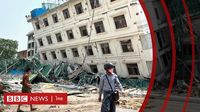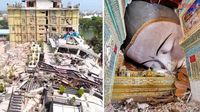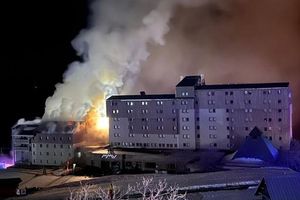On April 4, 2025, the United Nations Secretary-General Antonio Guterres expressed grave concern over the devastating impact of a recent earthquake in Myanmar, calling for urgent international assistance to alleviate the suffering of those affected. The earthquake, which struck on March 28, measured a catastrophic 7.7 on the Richter scale, resulting in at least 3,145 fatalities and leaving 4,589 individuals injured, with 221 still unaccounted for.
Guterres, speaking during a press conference at U.N. headquarters in New York on April 3, emphasized the dire need for increased funding and rapid humanitarian access to the affected regions of Myanmar. He highlighted that the disaster has compounded the existing humanitarian crisis exacerbated by ongoing political turmoil in the country. “Myanmar is now a scene of devastation and despair,” he stated, noting that the earthquake has unveiled the deep vulnerabilities faced by the population.
In a bid to coordinate relief efforts, Tom Fletcher, the U.N. Emergency Relief Coordinator, arrived in Myanmar to oversee the response. Guterres announced that he and Julie Bishop, the U.N. Special Envoy for Myanmar, would also visit the country shortly to reaffirm their commitment to peace and dialogue. “The earthquake has intensified the suffering as the monsoon season approaches. I urge everyone to do their utmost to turn this tragic moment into an opportunity for the people of Myanmar,” Guterres said.
The United Nations Office for the Coordination of Humanitarian Affairs (OCHA) reported that over 17 million people across 57 towns in Myanmar have been impacted by the earthquake and its aftershocks. Approximately 9 million individuals are facing severe hardships, with critical infrastructure, including hospitals, suffering extensive damage. The World Health Organization (WHO) indicated that four hospitals and one health center were completely destroyed, while 32 hospitals and 18 health centers sustained partial damage.
As rescue operations unfolded, international aid workers, including over 1,550 personnel from various countries, joined local officials in the efforts. India, Russia, and Belarus have set up mobile hospitals in Mandalay to expedite assistance to those in need. However, reports from the ground indicate a dire shortage of resources and aid, with many survivors expressing frustration over the lack of timely help.
According to a report by BBC journalist Yokita Limaye, the destruction in Mandalay is extensive, with collapsed buildings lining the streets. Many residents have received little to no help in the wake of this disaster. Sin Hein, a 41-year-old local man, has been anxiously waiting for news of his son, Sai Han Pa, a 21-year-old construction worker trapped under the rubble of a five-story building. “I still hope he is alive, even though the chances are slim,” Sin Hein told BBC. He has been waiting for five days, holding onto hope as rescue efforts have been hampered by a lack of resources.
As the situation in Mandalay continues to unfold, the Myanmar military government has requested international aid, but tensions with foreign nations, including the United States and the United Kingdom, have complicated the response. While these countries have pledged support, the actual deployment of personnel and resources has been limited. Aid has primarily come from neighboring countries like India and China.
The scale of the disaster is staggering, with reports indicating that 3.5 million people are in urgent need of assistance. The Myanmar government has acknowledged 2,886 deaths so far, but the true toll remains uncertain as rescue teams struggle to access the hardest-hit areas. Nirat Singh, a leader of an Indian disaster response team, noted that the collapsed structures are particularly challenging to navigate, complicating rescue efforts.
In the aftermath of the earthquake, many families have been forced to seek shelter in makeshift camps set up in public parks and open spaces, as they fear aftershocks. “I don’t know what to think anymore. My heart races at the thought of another quake,” said 72-year-old Dow Khin Soe Myint, who was seen waiting for water with her granddaughter.
As the humanitarian crisis deepens, the United Nations is urging the global community to respond swiftly and effectively. Guterres has called for a ceasefire from the Myanmar military to facilitate the delivery of aid, stating that the move is essential for allowing humanitarian assistance to flow into the country.
With the monsoon season approaching, the urgency for aid is heightened. The U.N. is working diligently to ensure that those in need receive the necessary support as quickly as possible. “The U.N. will push for peace and the lifesaving assistance the people of Myanmar need at this critical time,” Guterres assured.
As families continue to search for missing loved ones amidst the ruins, the emotional toll of this disaster is evident. Many are left grappling with loss and uncertainty, as they await news of their relatives trapped under the debris. The road to recovery will be long, and the need for sustained international support is paramount to help rebuild lives in the wake of this tragedy.






